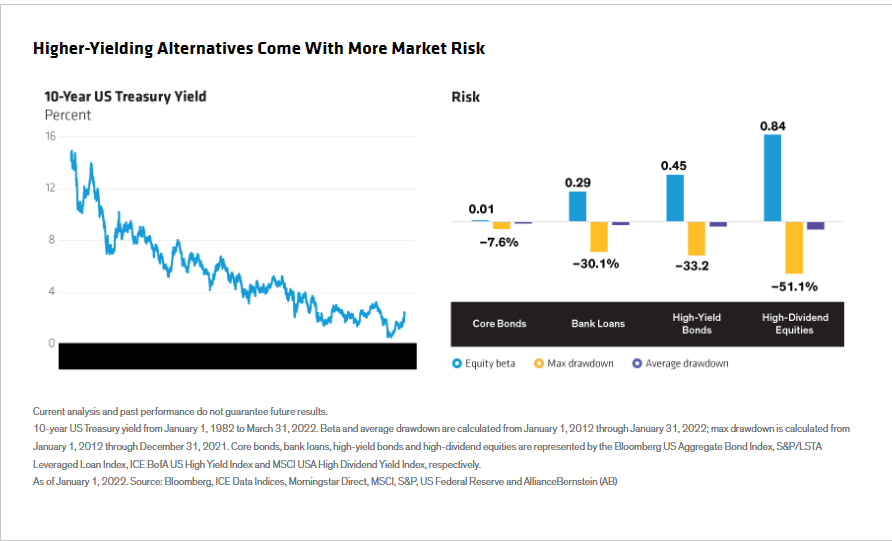Written by: Brian Resnick, CFA
What You Need to Know
Bond yields are up—that’s good news for income investors, but secular forces still pose headwinds for inflation-adjusted returns. We think an efficient way to generate income is by carefully assembling mixes of interest-rate and credit building blocks—and incorporating private-market exposure for additional diversification and return potential.

An Unfriendly Landscape for Income Investors
A challenging macro mix is set to make investing a lot more challenging in the years ahead: The share of the world’s population that’s of working age seems to have peaked. Growth in world trade, a huge economic tailwind since the mid-1980s, has flattened. And the global debt burden is nearing 140% of gross domestic product (GDP)—it’s well documented that levels above 100% can create economic headwinds.
Collectively, these factors will likely yield lower growth and higher inflation, creating a challenging environment for investors. Add in historically high equity valuations and historically low Treasury yields, and you may have a return problem.
Bond Yields Have Come Roaring Back
In the fixed-income world, yields have come a long way from their depths during the COVID-19 pandemic. Back in mid-2020, the 10-year US Treasury yield was only 0.6%, a meager level for income seekers. Then, in early 2022, the Federal Reserve kicked off a sharp cycle of interest-rate hikes in hopes of cooling off red-hot inflation.
By late 2023, the landscape had changed dramatically, with the 10-year Treasury yield well above 4%. While the yield surge inflicted a lot of pain across bond markets, it’s also brought renewed energy to traditional core bond strategies and bolstered the income-generating capabilities of sectors from investment-grade corporates to high-yield bonds and emerging-market debt.
Secular Forces Will Challenge Real Returns
While the power of higher bond yields is certainly a welcome development for income investors, the path forward will likely feature plenty of volatility. It will also feature the convergence of three macro headwinds (Display) that will pressure inflation-adjusted returns.

First, demographics are changing, with the global working-age population declining. Second, globalization seems to have peaked and pivoted into deglobalization, as evidenced by declining levels of world trade. And third, a growing debt burden is diverting otherwise productive investment in order to cover debt-servicing costs.
Related: Will Hawks Still Rule the Roost at Europe’s Central Banks?

